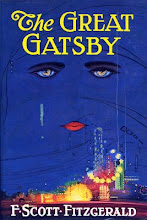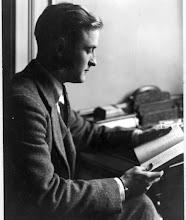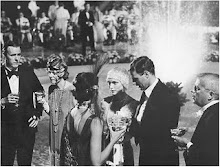F. Scott Fitzgerald was born in St Paul, Minnesota of mixed Southern and Irish descent. He was given three names after the writer of The Star Spangled Banner, to whom he was distantly related. His father, Edward Fitzgerald, was a salesman, a Southern gentleman, whose furniture business had failed. Mary McQuillan, his mother, was the daughter of a successful wholesale grocer, and devoted to her only son. The family moved regularly, but settled finally in 1918 in St. Paul. At the age of 18 Fitzgerald fell in love with the 16-year-old Ginevra King, the prototype of Daisy Buchanan of The Great Gatsby. Fitzgerald started to write at St. Paul Academy. His first published story, 'The Mystery of the Raymond Mortgage' appeared in 1909 in Now and Then. Fitzgerald entered in 1913 Princeton University, where he failed to become a football hero. He left his studies in 1917 because of his poor academic records, and took up a commission in the US Army. His experiences during World War I were more peaceful than Hemingway's - he never saw action and even did not go to France. The Romantic Egoist, a novel started in Princeton, was returned from Scribner's with an encouraging letter.
Fitzgerald's alcoholism and Zelda's mental breakdown attracted wide publicity in the 1930s. Fitzgerald learned that each breakdown made her final recovery less likely. His dependence on alcohol increased, in a letter to a friend he wrote: "A short story can be written on a bottle, but for a novel you need mental speed that enables you to keep the whole pattern in your head and ruthlessly sacrifice as Ernest did in "Farewell to Arms." If a mind is slowed up ever so little it lives in the individual part of a book rather than in a book as a whole; memory is dulled." He returned to Hollywood in 1937, where he met Sheilah Graham, a gossip columnist, with whom he lived for the rest of his life. Fitzgerald worked on various screenplays, but completed only one, THREE COMRADES (1938), before he was fired because of his drinking. The screenplay was based on Erich Maria Remarque's novel. When the young writer Budd Schulberg heard that he would cooperate with Fitzgerald in a film project, he said: "I thought he was dead." In a letter to his daughter from Hollywood in 1938 Fitzgerald revealed the "what I am doing here is the last tired effort of a man who once did something finer and better".
In 1939 Fitzgerald began a novel about Hollywood, THE LAST TYCOON, loosely based on the life of Irving Thalberg. Fitzgerald died on December 21, 1940, in Hollywood, in Graham's apartment, before the book was finished. Zelda Sayre died in a hospital fire in 1948. Their tragedy was basis Fitzgerald's novel Tender is the Night, which he revised repeatedly. His tortuous marriage was commented upon by Hemingway in A Moveable Feast (1964). In Tender is the Night a brilliant psychiatrist, Dick Diver, falls in love with a rich, beautiful mental patient, Nicole Warren. He marries her, and loses his idealism and potential for a great career, but Nicole, having battened on Dick's strength and love for ten years, emerges victorious. Fitzgerald's novel Trimalchion, which appeared in 1999, was partly based on Petronius' (died AD 66) Satyricon. The vulgar and rich Trimalchio, whose banquet Petronius satirized in his work, was the literary prototype of Jay Gatsby. The Great Gatsby was originally to be entitled Trimalchio's Banquet.
Source: http://www.kirjasto.sci.fi/fsfitzg.htm
F. Scott Fitzgerald has been involved in Hollywood life and it's where he got his inspiration from. Most of his works relied on social events and people. Many people love his works and said that he was one of the greatest author of all. I believe his books combined real life situations and descbribe deeply about what's happening in that period of time. He also used beautiful language. It expresses more emotions and feelings through these words and to make the readers follow, abosrb, and imagine as the readers read through his books.



















Again you must put into your own words. 70/75
ReplyDeleteMs. Donahue